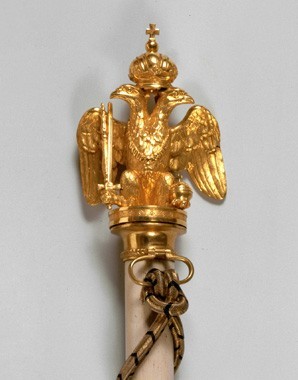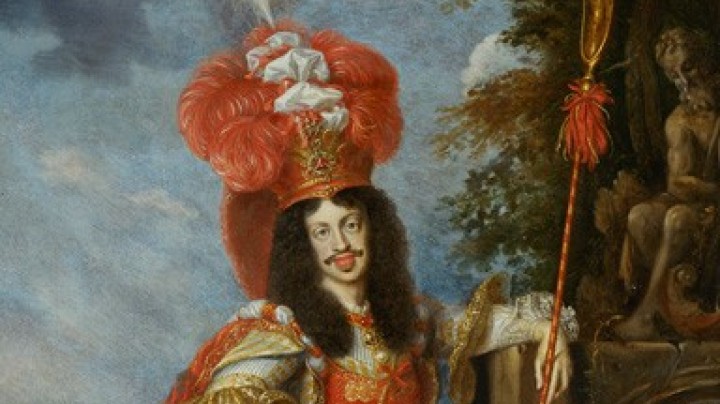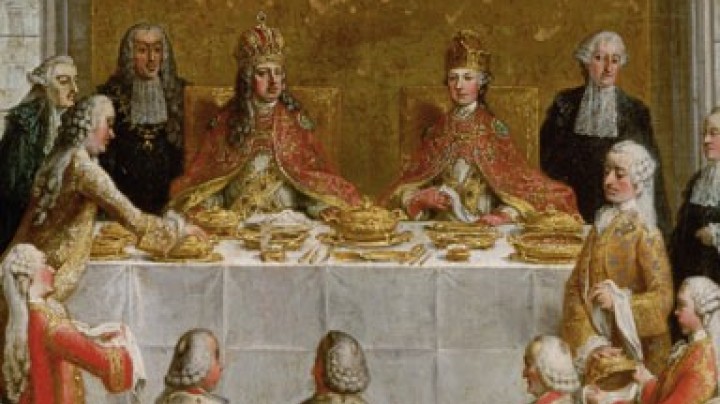The public banquet – a visual feast for the crowd
To mark the emperor’s birthday, high religious feast days, the festivities of imperial Orders, coronations and homage ceremonies, public banquets took place at which the monarch dined in public. This afforded his subjects the rare opportunity of observing their emperor at close quarters. For the nobility it was a great honour to manifest their proximity to the emperor by serving at table.
These banquets were intended to display to observers the splendour and power of the imperial Court and followed a clear ceremonial dramaturgy. Announced by a fanfare, the emperor and his retinue entered the room containing the festively-decked table. The individual courses were announced with a drumbeat, and the company dined to the accompaniment of table music.
Most of the dishes served were for display only, their elaborate decoration intended solely to enhance the splendour of the dining services made of precious materials, and were not meant to be eaten. Allegorical centrepieces alluded to the glory of the monarch’s majesty.
The emperor sat beneath a canopy of state, while the other participants were placed according to a meticulously worked out seating order based on rank. Mostly the members of the imperial family dined on their own; if other aristocratic guests were invited, they were usually served at separate tables which stood on daises of different heights: the number of steps leading up to the tables was a clear indication of position in the hierarchy. Gradations in rank were also symbolized by minute variations in the seating: whether or not the chair was upholstered or had a back spoke volumes.
At public banquets the food was not served by ordinary lackeys but by the aristocratic retinue of the court. They were organized by the Oberststabelmeister (Grand Master of the Table), who oversaw the course of events according to the strict rules of ceremonial, for each movement of the hand and every step were prescribed precisely.
Certain aristocrats called Truchsessen (seneschals) were responsible for the ceremonial presentation of the dishes. The Fürschneider (carvers) celebrated the elaborate carving of the meat, while the Mundschenk (cupbearer) attended to the serving of the drinks. The imperial Kämmerer or chamberlains, a rank which allowed special proximity to the emperor, tested the quality of the dishes and served the emperor at table. In addition, between each course, the chamberlains held a basin of water and towel for the emperor to wash his hands.
These banquets had a tradition reaching back into the Middle Ages and were preserved as an archaic ritual well into the nineteenth century: Franz Joseph traditionally held four public banquets a year.

















